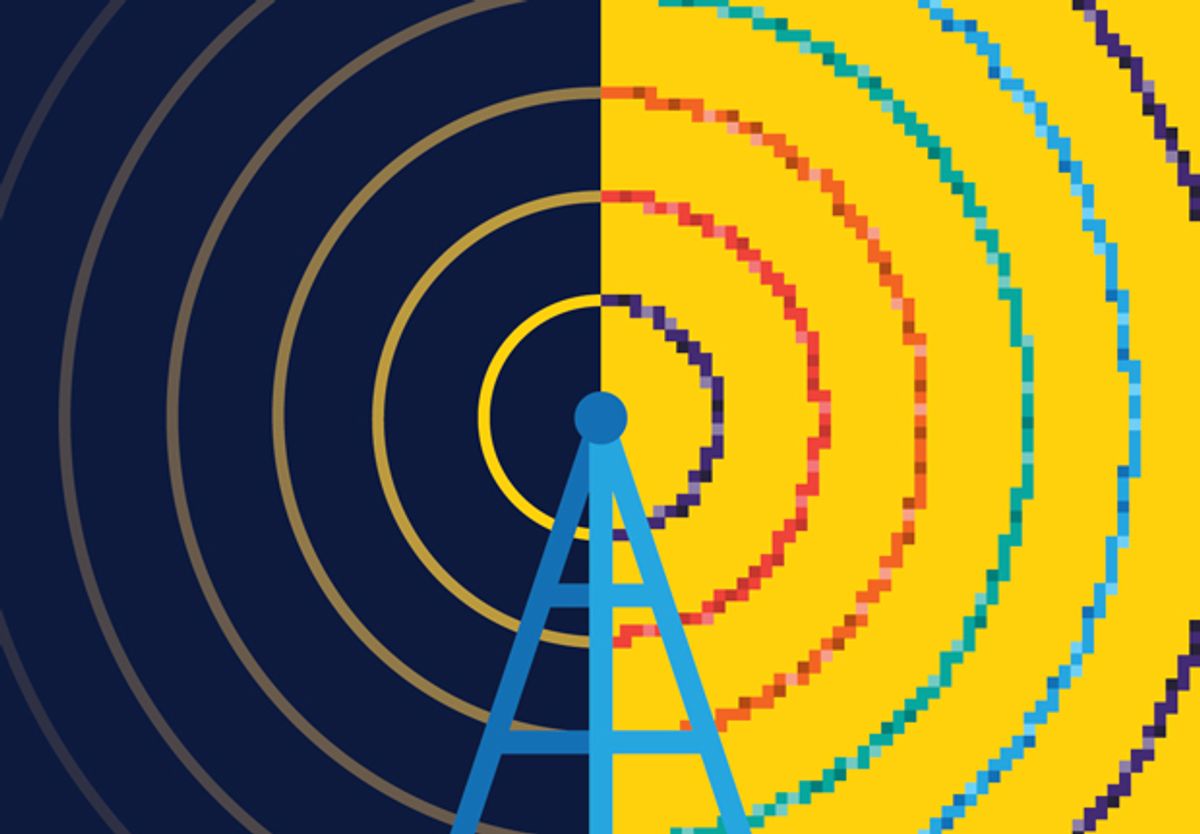Norway Pioneers the Digital Radio Future, Abandoning FM
The world watches as Norway makes the switch from analog to digital

Music recordings, video, television, and motion pictures—all have started or completed the transition from analog to digital. Oddly, though, broadcast radio remains largely analog around the world, despite the availability of digital services for more than a decade. But a major milestone for digital radio is coming in 2017, in Norway of all places.
The world’s big broadcasters will be tuning in to see the preparations in 2016 as Norway moves its national FM broadcasters from analog transmissions to a digital format. The switchover will be to the Digital Audio Broadcasting (DAB) standard, a European-originated system also making inroads in Asia and Australia. (In the United States, the HD Radio standard has had a lukewarm reception with consumers since it was introduced in 2003.) Starting in stages from January of 2017 and rolling through the long length of the country, Norway’s three national broadcasters, several regional commercial stations, and many urban transmitters will fall silent on FM bands while filling the air with digital packets broadcast at higher frequencies.
Matter of Fact
Right now, there are 22 national Digital Audio Broadcasting channels in Norway, offering considerably more choices than the five national FM-radio channels.
It’s been a deliberative process since the idea gained momentum in the Norwegian Parliament in 2011. To trigger the shift, NRK, Norway’s government-owned broadcaster, needed its digital coverage area to encompass 99.5 percent of the country’s population, which it did. At least 50 percent of Norway’s broadcast audience now listens daily to digital radio, which offers more program choices than FM.
But shifting to digital isn’t easy for everyone, especially for those who listen to the radio in their automobiles. Many cars, even some brand new ones, do not have DAB-compatible receivers. As a result, all counties in Norway and at least half the nation’s municipalities have places where people can take their cars for modification at “an economically and technically satisfactory level,” says Øyvind Christensen, deputy director general at the Ministry of Culture. He adds that adapters are available for under €100 (around US $110).
But even if the technical and economic hurdles prove easy to overcome, there is some fear of unintended consequences. Svein Larsen heads Norway’s community radio association, whose member stations are for the most part locally owned and operated. He explains that these station owners worry that an all-digital platform might entice bigger networks from outside the country to enter the market and squeeze out the country’s many community stations. So even with ostensibly more choices in programming, the offerings might end up being less diverse.
Norway Counts Down
June 1995
Trials of Digital Audio Broadcast radio begin in Norway, lasting through 1999.
May 2007
Norwegian minister of culture issues a report on broadcasting in the digital era.
February 2011
Norway’s government proposes a timetable for switching off FM.
April 2015
Norwegian officials confirm the date of transition.
January 2017
Most Norwegian broadcasters to cease transmitting analog signals.
On the plus side, digital radio will save money for the national broadcasters and create more bandwidth for additional programming. “It would be at least as expensive to renew the old FM network as it would be to invest in a new digital service,” Christensen says.
Norway’s DAB network needs 950 transmitters to reach its required coverage area and for the most part will use existing antenna masts. With FM, analog signals are broadcast at somewhere between 87.5 and 108 megahertz (also known as VHF Band II). With DAB, the signal leaves the transmitter in digital data packets on VHF Band III, from 174 to 240 MHz. The big stations are simulcasting on both bands already. Shuttering FM analog will save them 200 million Norwegian kroner (around $23 million) a year.
But what happens when drivers enter Norway from, say, Finland? Will their radios suddenly fall silent? Not exactly. They’ll still be able to tune in local community stations, which will keep their FM licenses and will be free to continue broadcasting in analog. National broadcasters and some two dozen commercial stations in the cities of Oslo, Bergen, Trondheim, and Stavanger, however, will be required to make the shift.
Other European broadcasters will be watching Norway closely to see how all this plays out. Denmark and Switzerland are quite close to being able to move away from FM, says Peter Senger, former research and development head for the German broadcaster Deutsche Welle and longtime champion of digital broadcasting. In other countries—notably the United Kingdom and the United States—the shift toward digital radio is proceeding at a glacial pace.
Six years ago the administration of U.K. prime minister Gordon Brown produced a report, Digital Britain, calling for a complete shift to digital radio in the country by the end of 2015. It hasn’t quite worked out that way. “There’s been a conscious decision in the U.K. not to announce anything like switchover, because we’re not there yet in terms of listening figures,” says Stephen Lax, a lecturer in communications technology at the University of Leeds. “Finland’s failed with digital radio twice already,” says Marko Ala Fossi of the University of Tampere, in Finland. “Both were supposed to be the future of digital radio.”
It seems even in 21st-century Europe, old-fashioned FM radio, like an old soldier, may never die—it will just fade away.
This article originally appeared in print as “Northern Lights Out for Analog Radio.”